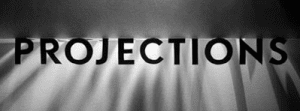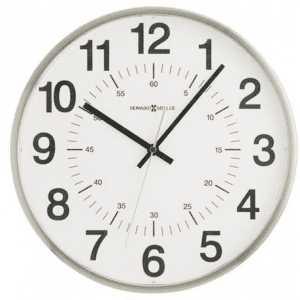 Your highest level of situational awareness is formed when you are able to make accurate predictions about future events. In science, we call this projection and it simply means you are able to predict, or project, future events. This is accomplished through mental models you develop that are founded in your training and experience. But for commanders, it requires more than training and experience to make accurate projections of the future. Let me explain.
Your highest level of situational awareness is formed when you are able to make accurate predictions about future events. In science, we call this projection and it simply means you are able to predict, or project, future events. This is accomplished through mental models you develop that are founded in your training and experience. But for commanders, it requires more than training and experience to make accurate projections of the future. Let me explain.
Expectations
 As you assess a scene and make predictions about future events you form expectations about outcomes. For example, if a crew of firefighters is sent inside a structure to extinguish a fire, company officers and incident commanders hold certain expectations about how things will change as the crew finds success (i.e., the black smoke will turn white and the flames will disappear). However, there is a second expectation that is every bit as important as the expectation of the outcome and it is one that is often overlooked by company officers, safety officers and incident commanders.
As you assess a scene and make predictions about future events you form expectations about outcomes. For example, if a crew of firefighters is sent inside a structure to extinguish a fire, company officers and incident commanders hold certain expectations about how things will change as the crew finds success (i.e., the black smoke will turn white and the flames will disappear). However, there is a second expectation that is every bit as important as the expectation of the outcome and it is one that is often overlooked by company officers, safety officers and incident commanders.
The second expectation that should be on the mind of company officers, safety officers and incident commanders is… How long should it take for the crew to accomplish the task? It is NOT an infinite amount of time. Every building on fire is in the process of falling down because of the forces of gravity being exerted on the structure. This means fire crews have a finite amount of time to accomplish the task before gravity wins and the building falls down.
The magic number
 What is the amount of time fire crews should be left inside a building to fight a fire? I get asked that question… a lot when I’m having this discussion with firefighters. Unfortunately, the answer is complex because there are so many variables that determine how long it should take for the crew to achieve their objective. One way company officers, safety officers, and incident commanders can more accurately predict the time to completion is to measure it, in advance.
What is the amount of time fire crews should be left inside a building to fight a fire? I get asked that question… a lot when I’m having this discussion with firefighters. Unfortunately, the answer is complex because there are so many variables that determine how long it should take for the crew to achieve their objective. One way company officers, safety officers, and incident commanders can more accurately predict the time to completion is to measure it, in advance.
Overestimating a crew’s ability
When a crew is assigned to perform a task, the company officer, safety officer and incident commander should all make a calculation about how long it will take the crew to accomplish the task. But unless the crew has practiced the task… together… recently… and under similar conditions as being experienced at the incident, how does anyone really know the amount of time it should take?
The dangers of a miscalculation
 Guessing wrong on the amount of time it should take a crew to complete a task can have some significant consequences. First, if a company officer or commander underestimates the time, they may find themselves excusing away their miscalculation and simply extend the deadline. This may happen several times and with each extension, the incident is drifting toward failure… slowly… but inexorably.
Guessing wrong on the amount of time it should take a crew to complete a task can have some significant consequences. First, if a company officer or commander underestimates the time, they may find themselves excusing away their miscalculation and simply extend the deadline. This may happen several times and with each extension, the incident is drifting toward failure… slowly… but inexorably.
Second, the company officer, safety officer or commander may become preoccupied with the crew’s failure to complete the task in the expected amount of time. This frustration can draw attention away from big-picture clues and lead to attention being focused on a crew’s inabilities to get the task done in the prescribed time. In fact, there can be such a preoccupation with the perceived failure to complete the task that all situational awareness is eroded.
The solution to this problem is a two-step process. First, ensure crews train together as teams, performing realistic tasks in repetitive ways to build proficiencies and efficiencies in their coordination and communications. Second, crews should be timed so company officers, safety officers, and commanders know, without a doubt, how long it takes to accomplish a task by a given crew. Third, commanders and safety officers should observe crews during training to make first-hand assessments of abilities and deficiencies. This means when crews are training, commanders should be present and participating (not in the hands-on task, rather in the command tasks).
Dr. Gasaway’s Advice
 We all know that crew members have a wide array of skills, physical fitness, and stamina. These variations need to be taken into consideration when assessing the time-to-task-completion for crews. Timing crews during training evolutions helps everyone begin to appreciate the wide variation in crew abilities and this knowledge will be helpful in forming the situational awareness of company officers, safety officers, and commanders.
We all know that crew members have a wide array of skills, physical fitness, and stamina. These variations need to be taken into consideration when assessing the time-to-task-completion for crews. Timing crews during training evolutions helps everyone begin to appreciate the wide variation in crew abilities and this knowledge will be helpful in forming the situational awareness of company officers, safety officers, and commanders.
Action Items
 1. Discuss how to form reasonable expectations for crew abilities at emergency scenes.
1. Discuss how to form reasonable expectations for crew abilities at emergency scenes.
2. Discuss what other variables besides crew skills, physical abilities and stamina factor into determining how long a crew should be allowed to perform a high-risk, high consequence task like interior fire attack.
3. Discuss ways to improve crew coordination and communications as a means to improve efficiency in task completion.
_____________________________________________________

If you are interested in taking your understanding of situational awareness and high-risk decision making to a higher level, check out the Situational Awareness Matters Online Academy.
CLICK HERE for details, enrollment options and pricing.
__________________________________
Share your comments on this article in the “Leave a Reply” box below. If you want to send me incident pictures, videos or have an idea you’d like me to research and write about, contact me. I really enjoy getting feedback and supportive messages from fellow first responders. It gives me the energy to work harder for you.
Thanks,

Email: Support@RichGasaway.com
Phone: 612-548-4424
SAMatters Online Academy
Facebook Fan Page: www.facebook.com/SAMatters
Twitter: @SAMatters
LinkedIn: Rich Gasaway
Instagram: sa_matters
YouTube: SAMattersTV
iTunes: SAMatters Radio
iHeart Radio: SAMatters Radio



When calculating times that it takes to complete a task, consideration must also be given to the type of contsruction that crews are working in. Newer light weight construction can not endure the effects of fire as well as previous stick built construction. Emphasis should be put on visisting construction sites of homes and businesses in the district to see first hand what type of materials and building techniques are being used.
Marlon,
Great point! Construction is critical in the calculation of time to task completion. Thanks for adding to the discussion.
Rich
Marion,
Great point! Construction is critical in the calculation of time to task completion. Thanks for adding to the discussion.
Rich